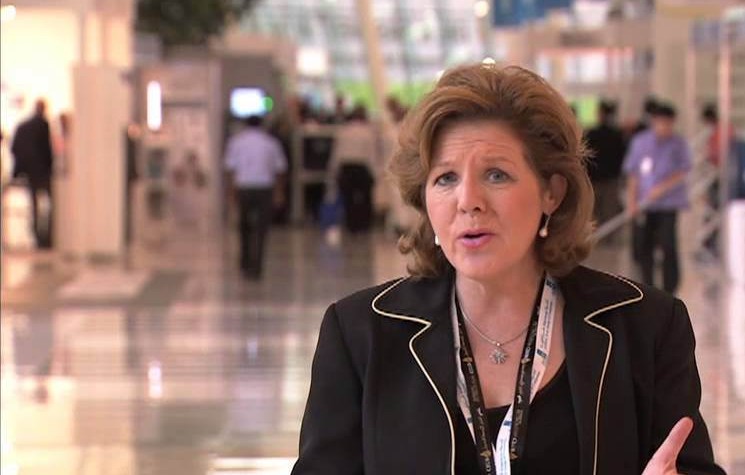Geopolitical nervousness and supply uncertainty move oil markets

By Eithne Treanor
Geopolitical nervousness and supply uncertainty moved markets this week. The January jobs data from the US could signal hope for growth in demand as oil prices see a rebound from six-year lows. In early trading on Friday, Brent crude was just above US$58 with WTI following around US$52 a barrel.
The state of the global economy will always impact the oil price and US non-farm payroll data is expected to show steady growth as the market prepares to analyze figures from last month. America remains the world’s biggest consumer of oil, and despite a supply glut, an increase in demand will be bullish for the market.
The oil price is seeing greater volatility in the last week with intra-day gains of more than 4 per cent following a fall of almost 9 per cent. At times of uncertainty, this volatility is to be expected. The Chicago Board Options Exchange (CBOE) Oil Volatility Index is at its highest level since 2011. Traders and investors have observed the possible end of low volatility across markets and say that 2015 could see a “roller-coaster” ride becoming the norm.
Industry players as well as producers are anxiously looking for the turning point in the oil market. Todd Heltman and Jeff Wyll, Senior Energy Analysts at Neuberger Berman in London, argue that despite ongoing volatility, “the seeds of a possible price recovery are being planted today.”
Their report says “the production impact from the lower rig count expected later this year, should help balance the oil market.” They note that as the volatility continues, “it appears the market is currently torn between focusing on the buildup of current crude inventories and production growth, which are lagging indicators, driven by capital decisions made earlier, at higher oil prices and the falling rig count due to lower prices, which is forward looking.”
Looking at a possible inventory increase in coming months, falling production is inevitable and the two conclude that a “supply-side correction is underway.”
Saudi Arabia remains an active player on the market, claiming market share with new competitive pricing. When it comes to selling on the Asian market, the Saudi’s offered a bigger discount for Arab Light by 90 cents a barrel less than Middle East benchmarks.
The Asian market is well supplied from around the world and Saudi Arabia is determined to hold its share in China and in the region where cargoes from Russia, Africa and Latin America are plentiful. In a separate move, the Saudi Arabian Oil Company increased its price by 15 cents, reversing the discount already in place for 3 months, to the American market for next month’s delivery.
Saudi Arabia has traditionally sold its oil at different prices in different markets depending on demand and its determination to maintain market share as in the case of Asia in recent weeks.
The big oil companies are feeling the pinch and continue to cut capital expenditure and remain cautious as they plan for the year ahead. Early in the week, BP reported a loss of US$4.4 billion for the fourth quarter compared to a profit of one billion dollars for the same period last year. The company has written off about US$5.5 billion in assets in Angola and in the North Sea over the year due to falling reserves. In a statement, the CEO Bob Dudley said that capital spending would be cut by about US$3 billion in the coming year.
He added that the company’s focus would be on “managing and rebalancing our capital program and cost base for the new reality of lower oil prices,” as some exploration and marginal project plans would be shelved. Independent analyst Cornelia Meyer observed that while BP’s results were above analyst expectations, the company is gearing up for a period of low oil prices over the next three years.
“The company is rebasing its operations to reflect that assumption and expects a deflation in operating costs, oil field services and supply chain as reflected by the results from the oil field service and equipment providers.” Meyer talks of the “unlikely” rumours of a possible BP take-over. “The size and market position of the company as well as the size and market position of any potential acquirer would pose sizable obstacles for the global anti competition authorities.”
Joining BP, most major international oil companies, ExxonMobil, Shell, Conoco/Phillips and Chevron have all reported fourth quarter earnings. We’re expecting results from the French oil company Total on Thursday next, 12th February.
Meyer notes, “earnings for the fourth quarter year on year were markedly down,” with some of the companies signaling spending cuts. Overall she believes that “the integrated companies with strong and efficient downstream operations were able to weather the storm better than pure upstream plays like the independent E & P companies.”
The ongoing fighting in Libya is threatening regional instability as well as impacting the country’s oil production. International political observers are concerned that recent attacks have the handiwork of ISIS and senior Libyan officials believe that ISIS is active in several Libyan cities.
Earlier this week gunmen stormed the Al- Mabrook oilfield and operations at the field, located south of Sirte, were closed. Parts of Libya remain in chaos with rebel gangs in disarray and two rival governments controlling different parts of the country. Many of the major oil fields are shut as the country’s oil production currently runs at a few hundred thousand barrels a day.
Despite volatility and a rebound on the market this week and last, the oil price has lost more than 50 percent value in recent months. With the price currently above US$50 a barrel, many analysts hope to see the current trend continue, but the oil market remains unpredictable and few are expecting the glory days to return any time soon.
Comments (0)